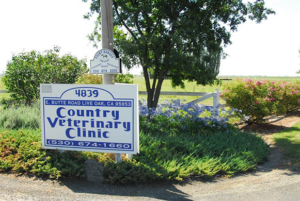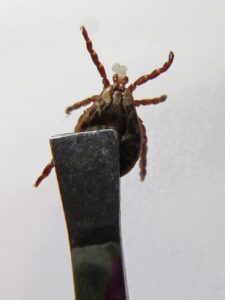Unless you are an experienced dog owner, you may not realize quite how common skin conditions are in our canine companions. One that is fairly common but quite unknown is known as hot spots. This painful and irritating skin condition might sound like summer problem, but it can actually occur in dogs all year around. Recognizing the condition and knowing how to treat it can help ensure that your furbaby doesn’t suffer with it for any longer than she has to.
What Are Hot Spots?
Also known as acute moist dermatitis, hot spots are essentially an allergic reaction which is triggered by your dog’s immune system when her body comes into contact with something that she is hypersensitive to.
Hot spots look like red, moist and irritated skin lesions that can vary in size and appear on any part of your dog’s body. Nevertheless, most owners find that they tend to occur more on the head, chest, hips and tail. These lesions are painful, extremely itchy and will grow and spread rapidly if they are scratched, licked or rubbed – something which almost always happens as your dog simply won’t be able to help herself. Over time they can become infected, and this means that they may ooze, bleed or become crusted over.
Causes Of Hot Spots
Like humans, dogs can be hypersensitive to a wide variety of different things, each of which has the potential to cause hot spots to develop. Some of the most common triggers include:
– Flea, mite or tick bites
– Food intolerances
– Skin or ear infections
– Insect bites
– Contact allergy, such as brushing past something that is toxic to your dog, like a plant or coming into contact with a chemical substance
– Allergy to pollen, grass or mold
– Skin infections due to matted hair
In some instances, hot spots can also be caused by your dog repeatedly licking, scratching or chewing the same patch of her coat over and over. She might so this if she is stressed or bored.
Certain breeds of thick-haired dogs are also more likely to develop hot spots, particularly during the summer months when temperatures are higher and their fur traps excessive amounts of heat. This is because their skin cannot breathe very well, and infections are more likely to develop.
How To Treat Hot Spots
Fortunately, hot spots are fairly straightforward to treat, and your dog should go on to make a full recovery with no long-lasting effects. However, for treatment to be successful it is important that you do everything you can to identify the cause of the condition so that you can avoid exposing your furbaby to it again in the future.
Exactly what care our veterinarian will recommend will depend on the extent of your dog’s condition. Some of the most common treatments for canine hot spots include:
– Antibiotics to treat infections that may have developed
– Antihistamines
– Anti-inflammatory medications
– Cleaning the wound daily with a prescribed solution
– Collar to prevent your dog from further irritating the wounds
– Dietary supplements to boost your dog’s immune system
– Pain medications
– Parasite medications and preventatives
– Shaving the hair around the lesions so that there is better air circulation, cooling the wounds and easing irritationIf your dog is suffering from hot spots, seeking the advice of our veterinarian as soon as possible will help alleviate the irritation and suffering she is experiencing. If you have further questions about the condition, or if you would like to schedule an appointment with our caring and professional team, please contact our offices.



